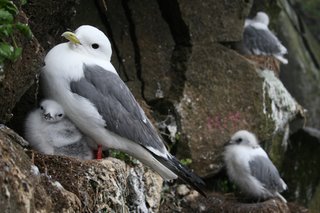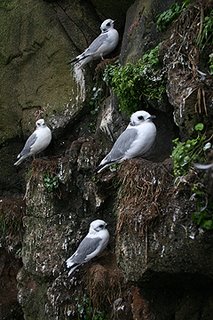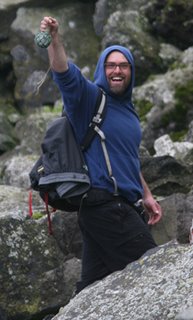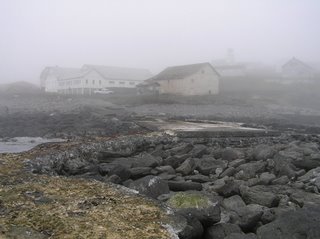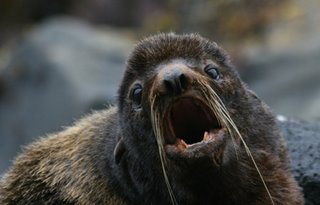The Gift of the Gurge

The other day a kittiwake chick pucked all over my leg. I was ecstatic! The regurgitation contained a bunch of fish eggs. I had never seen a single fish egg in a gurg, let alone this amazing quantity. I couldn’t wait to tell everyone.
Yes, this is the type of thing we talk about over dinner out on St. George Island.
I’m continuing the annual kittiwake chick growth study and, well, it can be a messy job. We make the rounds of weighing and measuring a set of 40 chicks every 4th day. The purpose is to get growth rates and collect gurges for diet analysis.
The first step in this process is to don a climbing helmet and “special” set of rain gear that I wear just for doing chick growth. I also call it “The Stink Suit,” for obvious reasons. The chicks will puck and poo on me with reckless abandon. I take an extension ladder and head for the bird nesting cliffs. I usually have one person with me to hold the ladder when I climb up to the chicks. Then it is wobble bobble over snot rocks and up and down the shaky ladder with pockets and handfuls of birds.
This can be a dicey operation. The ground is uneven, rocky and slick with a combination of wetness, sea slime and bird shit. The situation can be a bit shaky below…and above. The cliffs are rather crumbly, you see. I don’t know which job is more dicey, climbing the ladder or holding it from below, dodging falling rocks.
Almost without fail when I grab a chick it releases a squirt of excrement. You would think by now I would know how to avoid this, but no. My chest is always covered with white streaks. Sometime during the weighing and measure the bird usually gives a high pitches, urgent call. I know what is coming. If I am lucky I get my hand out in time to catch the gurge. If it falls elsewhere it is harder to collect. Of co
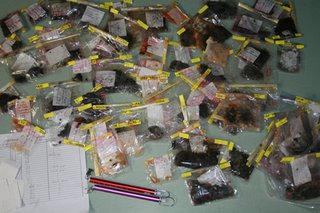 urse, the dream is always to get the chick to gurge directly into a collection bag, but that almost never works out.
urse, the dream is always to get the chick to gurge directly into a collection bag, but that almost never works out.Later that day, usually sometime after midnight, I process the gurges as shown in this picture. If you look closely you may be able to find the one with the entirely intact baby octopus. Another first this year and, yes, another great dinner conversation in the making.
